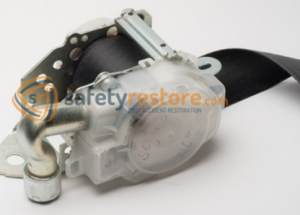
With the winter season approaching, drivers need to begin thinking about winterizing their vehicles to deal with the onslaught of cold temperatures, black ice, and, of course, snow! The winter is especially hard on vehicles, but by winterizing your vehicle, you can limit potential damage to your car and ensure your safety and the safety of your passengers. Follow these six steps to winterize your vehicle.
Check your battery: cold weather is brutal on a vehicle’s battery. Make sure your battery does not need to be replaced. You can have a mechanic check your battery even if your battery does not need to be replaced, a mechanic and clean up any corrosion on the connections and posts.
Maintain your windshield wipers and wiper fluid: Make sure you have plenty of wiper fluid and that your windshield wipers do not need to be replaced. You can also find windshield wiper fluid that has a lower freezing temperature. Malfunctioning or frayed windshield wipers should be replaced as soon as possible.
Get snow tires: if the roads you drive daily are snow-covered on an on-going basis, you may consider getting snow tires, which provide more traction. With softer rubber than your typical all-season tires, these tires maintain flexibility in colder temperatures. They also have grooved patterns that can grip snow and ice. Whether you drive on all-season tires or snow tires, you should ensure proper tire pressure. Air pressure in tires drops in cold weather. Generally, 1psi is lost for every 10-degree drop in temperature.
Check your anti-freeze: make sure your anti-freeze and water mixture is about 50:50 to hinder any coolant from freezing in your radiator. Auto stores typically carry inexpensive anti-freeze testers, which you can use to test the mixture yourself.
Use a thinner oil: you may consider switching to thinner oil. Oil is used as a lubricant in your engine. During the winter season, cold temperatures result in thicker oil, which impacts lubrication ability. By switching to a thinner oil, you can keep the effectiveness of the oil.
Maintain your vehicle’s safety: if you need maintenance on your car, including seat belt retractor repair, be sure to do it before the wintertime. Maintaining safety is always important, but especially so when driving on slick roads in the winter season. If your seat belt is not retracting the way it used to, you may need seat belt retractor repair. Luckily, Safety Restore offers seat belt retractor repair that is fast, easy, and affordable. Detach your seat belts and mail them to Safety Restore. Safety Restore will take care of your seat belt retractor repair within 24 hours of receiving them. Not only will your seat belt retractor repair improve the look of your car, but you will be safe for the upcoming winter months. Do not wait for an accident – contact Safety Restore about seat belt retractor repair today!
